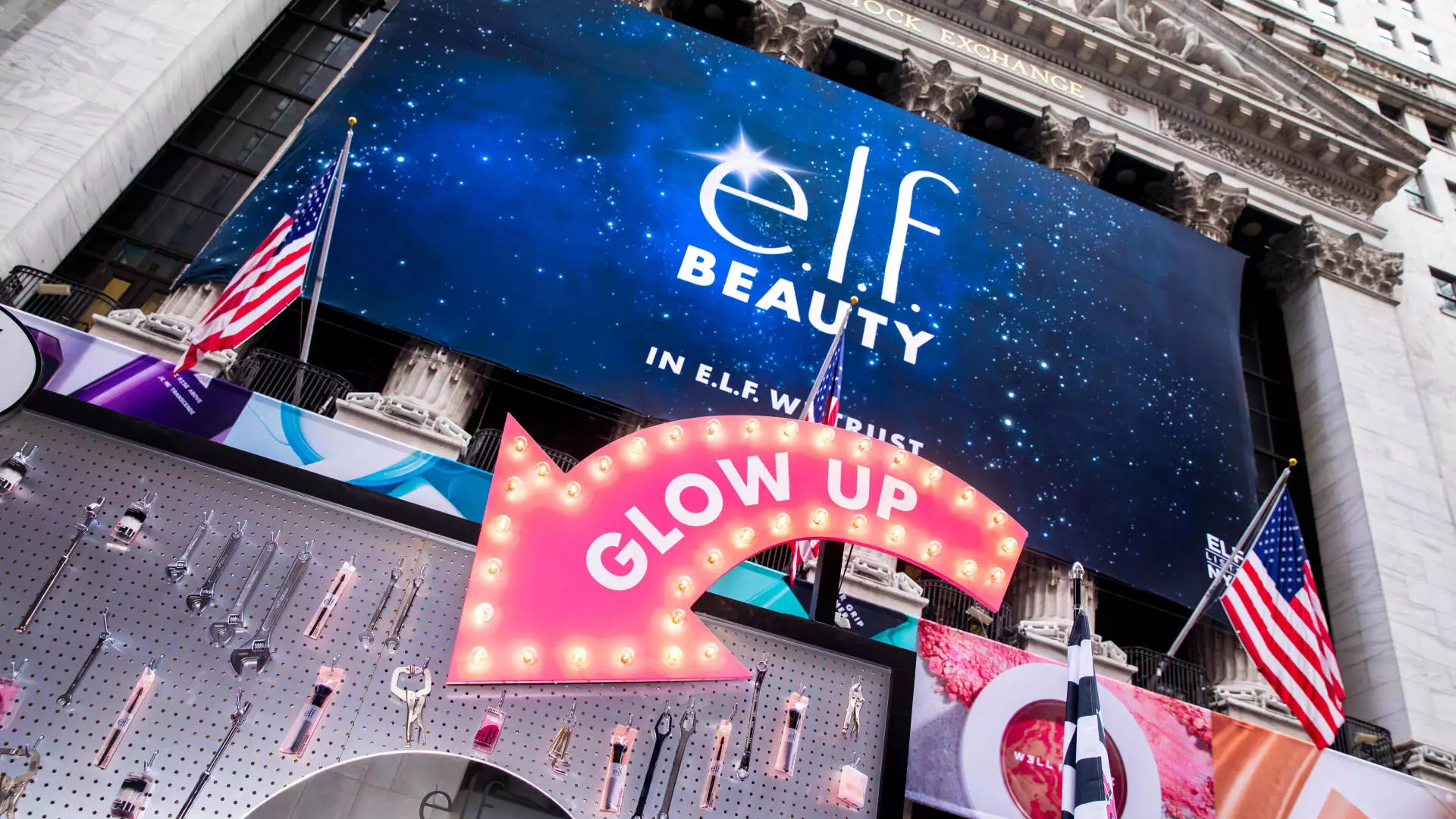Assessing the Impact of Tariffs on E.l.f. Beauty: A Look at Resilience and Strategy

In the landscape of international trade and commerce, tariffs are a potent variable influencing the pricing strategy and operational outlook for companies engaged in global supply chains. The cosmetics industry, particularly brands reliant upon manufacturing in China, faces unique challenges in this dynamic environment. E.l.f. Beauty, a popular cosmetics retailer, stands at the crossroads of these challenges. As its CEO, Tarang Amin, expressed relief following the announcement of a 10% tariff on Chinese imports—a far cry from previous fears of escalated tariffs of up to 60%—the company navigates the uncertain waters of international relations and pricing pressures.
When the U.S. recently imposed a new 10% tariff on imports from China, the initial reaction throughout the retail sector was one of concern. Companies that depend heavily on Chinese manufacturing, like E.l.f., worried about potential costs passed on to consumers and the subsequent impact on sales. However, Amin’s remarks reflected a cautious optimism; the anticipated financial strain could have been significantly worse. In a marketplace already rife with competition and price sensitivity, E.l.f. is poised to adapt rather than react impulsively.
Amin’s viewpoint subtly highlights the broader industry sentiment, revealing a mixture of anxiety and relief among retail executives. This duality underscores the complexities facing businesses that rely so heavily on foreign production, especially in light of geopolitical tensions. The temporary nature of the situation—punctuated by ongoing negotiations and retaliatory measures from China—complicates the decision-making process for companies determining how to address potential profit margin erosion.
Policy changes can compel companies to rethink their pricing strategies. For E.l.f. Beauty, Amin foreshadowed the prospect of price increases, dependent upon the longevity and stability of the new tariff structure. Unlike other industry players, such as Mattel, which indicated a readiness to adjust retail prices to cushion profit margins, E.l.f. seems more conservative. This cautious approach stems from the desire to avoid alienating price-sensitive consumers who currently engage with the brand for its affordability.
E.l.f.’s previous decisions, such as the incremental price increases following past tariffs, hint at a careful balancing act between maintaining market share and preserving profitability. While a $1 increase on a third of its products may not deter many loyal customers, a sudden or significant price hike could jeopardize E.l.f.’s identity as a cost-effective alternative to luxury beauty brands.
Strategically, E.l.f. has managed to mitigate some potential fallout from tariffs through diversification of its manufacturing base. Having reduced reliance on China by around 20%, the company is not as vulnerable as during previous tariff escalations when almost all its products came from that region. This proactive adjustment showcases a level of foresight not present in earlier dealings when external factors impacted prices directly.
Moreover, E.l.f. is capitalizing on a growing international market, accentuating its resilience amid challenges in the U.S. market. This expansion reduces risk exposure and allows the brand to tap into diverse consumer bases that can cushion the impact of domestic tariff-related pricing strategies. As the global economy fluctuates, versatility in operations emerges as an essential attribute for brands like E.l.f.
E.l.f. Beauty’s current landscape reflects a blend of strategic adaptability and cautious optimism in the wake of tariff-driven challenges. While the immediate imposition of a 10% tariff may elicit relief compared to more stringent options, the uncertainties surrounding future tariff levels and international negotiations remain a backdrop for ongoing business strategy. E.l.f.’s ability to navigate these complexities while maintaining its reputation for affordability may well dictate its market position in an increasingly competitive global climate.
In an era defined by rapid changes and economic unpredictability, what remains evident is the need for companies to equip themselves with the tools and strategies necessary for resilience. E.l.f. Beauty’s proactive measures and careful consideration of market dynamics showcase a path forward that prioritizes both financial health and consumer loyalty. As the dialogue around tariffs continues to evolve, E.l.f. Beauty stands as a case study in strategic navigation amidst uncertainty.





